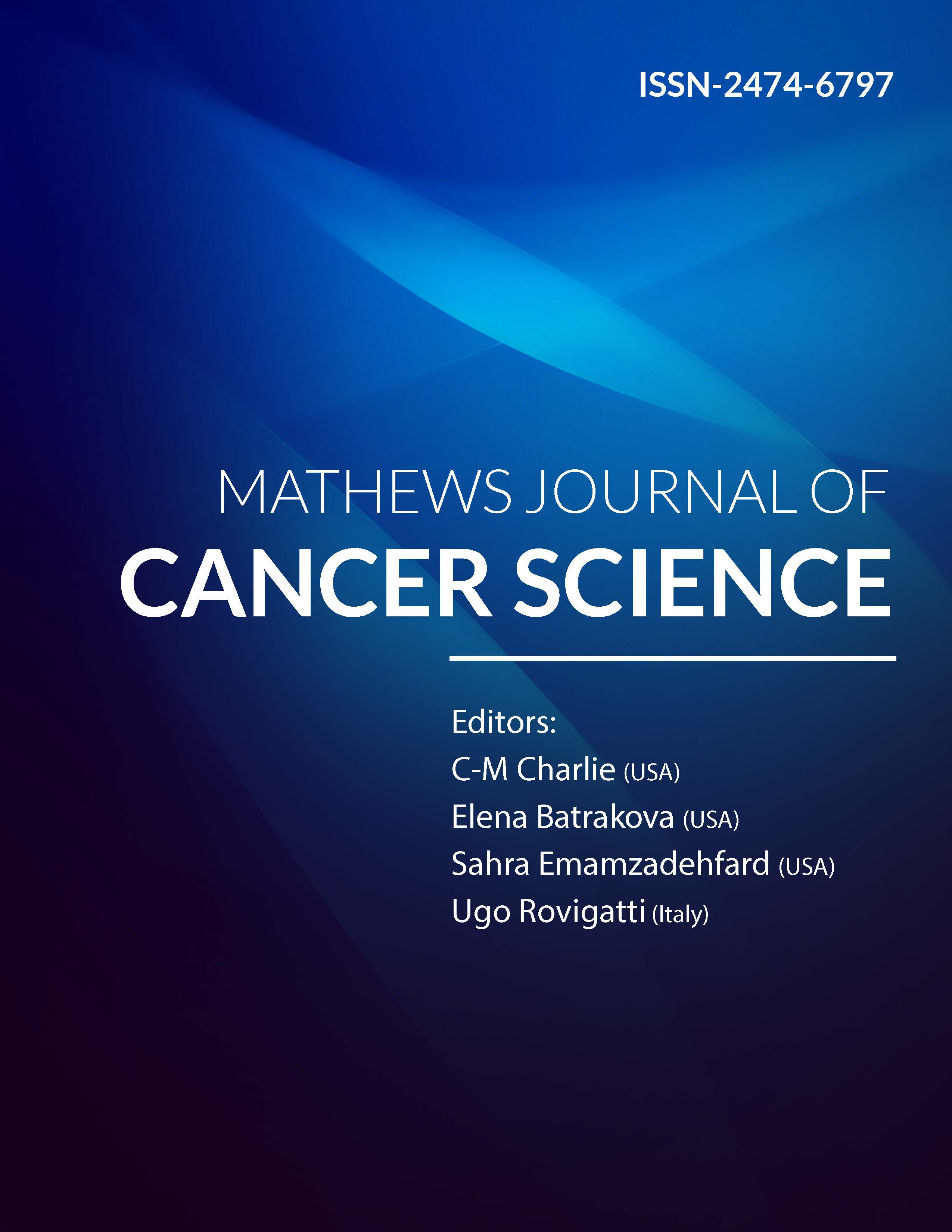
Information Links
Previous Issues volume 5, Issue 1 - 2020
The Nonthermal Therapeutic Effect of Pulsed Focused Ultrasound
C-M Charlie Ma*, Xiaoming Chen, Alain Tafo, Dusica Cvetkovic, and Lili Chen
Department of Radiation Oncology, FoxChase Cancer Center, Philadelphia, PA19111, USA
Corresponding Author: C-M Charlie Ma, Ph.D., Radiation Oncology Department, FoxChase Cancer Center, 333 Cottman Avenue, Philadelphia, PA19111, USA, Tel-215-728-2996; Fax: 215-728-4789.
Received Date: Feb 02, 2020
Published Date: May 29, 2020
Copyright: Ma CM, et al. © 2020.
Citation: Ma CM. (2020). The Nonthermal Therapeutic Effect of Pulsed Focused Ultrasound. Mathews J Cancer Sci. (5) 1: 20
ABSTRACT
Purpose: Many studies have been carried out on the use of high-intensity focused ultrasound (HIFU) for tissue ablation and enhancement of drug delivery for various therapies. This work aims to investigate the nonthermal therapeutic effect of pulsed focused ultrasound (pFUS) for cancer treatment.
Method: This study used a MR-guided HIFU system (InSightecExAblate 2000), which is integrated with a 1.5T GE MR scanner, for in vitro and in vivo experiments. Ultrasound parameters derived from previous studies were used to perform nonthermal sonications, keeping tissue temperatures below 42°C as measured in real time by MR thermometry. MCF-7, LNCaP and PC3 cells were used in the in vitro cell survival experiments and implanted in nude mice for in vivo studies. The tumor cells and the tumor-bearing mice were treated with pFUS (5, 6 and 25W acoustic power; 1MHz frequency; 10% and 50% duty cycle; 60 sec duration). Implanted tumors were treated with 4-6 sonications guided by MR imaging. The clonogenic assay and trypan blue dye analysis were performed for treated tumor cells. High-resolution (0.2mm) MRI was used weekly to measure tumor growth for both treated animals and the control group.
Results: The in vitro experimental results showed significant nonthermal cell damage by pFUS exposures. For LNCaP cells, 10.6 and 33.6% cell deaths were observed for 6 and 10W acoustic power, respectively. Significant tumor growth delay was observed in the pFUS-treated tumor-bearing mice. The mean tumor volume for the pFUS-treated mice was 20-30% smaller than that of the control mice one week after the pFUS treatment depending on the acoustic powers and duty cycles used.
Conclusions: Our in vitro and In vivo experimental results have confirmed the nonthermal therapeutic effect of pFUS. More systematic studies are needed to derive optimal ultrasound parameters and fractionation schemes to maximize the therapeutic potential of pFUS. Further investigations are warranted to understand the mechanism of pFUS-induced nonthermal cell damage.
KEYWORDS: High-intensity focused ultrasound (HIFU); Pulsed focused ultrasound (pFUS); MR guidance; Thermal ablation; Nonthermal effect; Therapeutic effect; Breast cancer; Prostate cancer